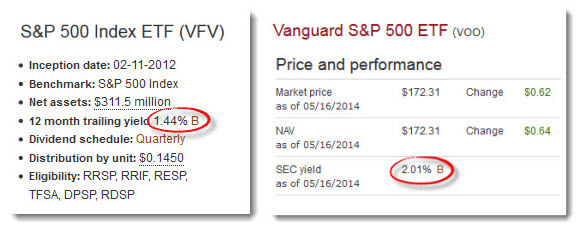Why do ETF yields differ?
Yield calculations are done differently south of the border.
Advertisement
Yield calculations are done differently south of the border.

Share this article Share on Facebook Share on Twitter Share on Linkedin Share on Reddit Share on Email